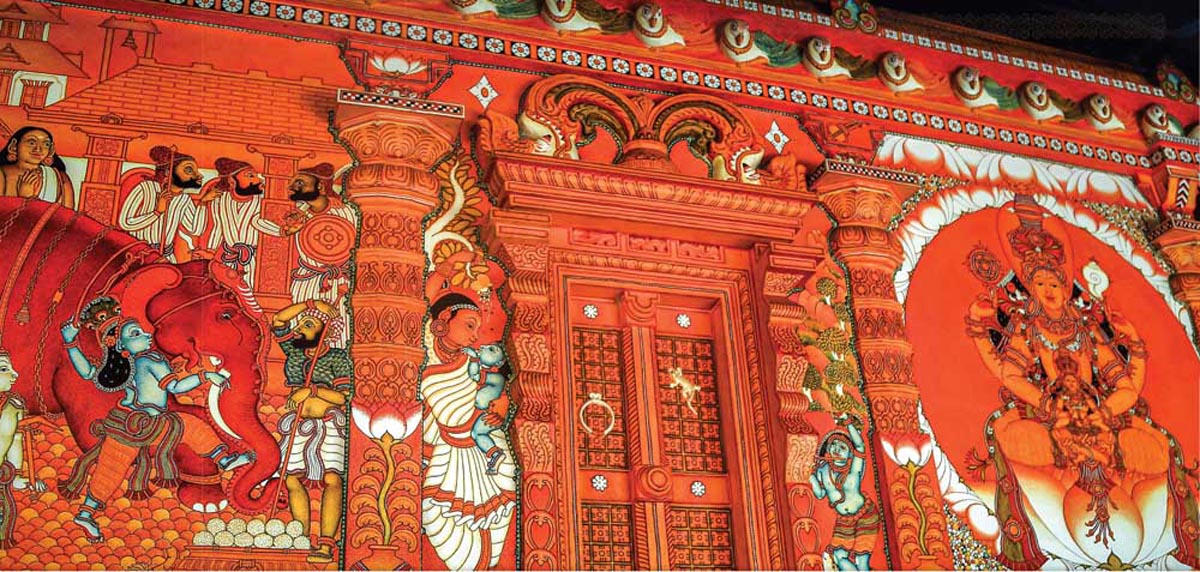Meet the Contemporary Masters of an Amazing Temple Craft
From the depictions of the Supreme in the forms of Brahma, Vishnu and Rudra, to the many demigods constantly battling power-seeking demons, to mythologies of holy avatars and so much more, Kerala mural paintings have been visually narrating epic tales for centuries. They grace the walls of ancient temples and palaces with astonishing artistry. An ancient Dravidian art believed to have originated in the 7th century under the influence of the Pallavas, this creative form reached its zenith between the 17th and 18th centuries alongside the Bhakti movement. Though the art nearly became extinct due to fading royal patronage, zealous revival efforts have brought this indigenous practice forward in today’s art scene. It has been gaining appreciation and love from enthusiasts and collectors worldwide.
Introduction
By Bhaani Sekhon, Chitragarh
TO PROPERLY EXPERIENCE THE AESTHETICS of Kerala’s mural art, one needs to comprehend the remarkably coherent relationship it shares with the architecture of the region’s temples. These temples are constructed in adherence to instructions and philosophy found in the Kularnava Tantra (a primary tantric text), whose mystical verses reveal that the human body is equivalent to a temple and that Sadasiva, or Paramatma is the Deity in this temple. So, too, can a temple structure be constructed in alignment with this principle. Acting as a physical-world body for the Deity, the temple’s design encompasses the whole body. The temple’s Srikovil (inner sanctum sanctorum), which stands as an independent structure within the temple complex, is considered to be the head of the Deity, and the statue or yantra of the God that resides within it is considered to be the essence of the Deity, a connection to the God’s inner form and spirit. The murals are illustrated on the outer walls of the sanctum sanctorum, harmoniously blending with the elaborate wood carvings decorating the roof. The paintings are worshiped along with the murti (image of the God), which is made of granite, wood or panchaloha , a traditional five-metal alloy. A Srikovil is a beautiful union of natural resources: the main framework is made of wood, while granite and laterite are used for the foundation, lime plaster for the walls and copper plates layer the wooden roof.
The temple murals are characterized by highly stylized figures of Gods and Goddesses, richly embellished with flora and fauna, vibrant colors and delicate strokes. However, Kerala mural painting is much more than a way to illustrate mythological stories and folk tales as per the artist’s fancy and imagination. Iconography of these paintings is solely based on Dhyana Slokas , a collection of over 2,000 verses of invocatory sacred text that define in fine detail the various forms of the Deities—their nine rasas (emotions/expressions), embellishments, weapons, vehicles, proportions, color schemes and more. The purpose of these Sanskrit verses is to manifest the Deity’s form in the artist’s mind, enabling the creation of this devotional art.
For style and technique, the practitioners have adhered strictly to the classical text Shilparatna , authored by Sri Kumara under the patronage of Devanarayana, the ruler of Travancore in the 16th century. This encyclopedic Sanskrit text serves as a guidebook for all Kerala muralists. It describes the preparation of pigments and brushes, application of plaster on the walls, a primary color palette (Panchavarna), sketching methods, stances of figures and other such aspects. All these are explained at length in this exhaustive treatise. It also elaborates on the science of iconography. For instance, precise proportions are defined for each form. This explains why a particular Deity will have the same proportions throughout all the temple murals in Kerala.
To properly learn the skill of traditional mural painting, a muralist must study and comprehend this classical literature. Contemporary mural artists still diligently follow these traditional guidelines. However, the paintings are no longer drawn exclusively on temple walls. They also take form on canvas, paper, clay and cloth. Despite this fusion of classical and contemporary expression, the indigenous art style is still referred to as “Kerala mural art.”
Here we highlight Saju Thuruthil, Manikandan Punnakkal, Kalamandalam Bindhulekha and Sasi Edavarad, some of the most recognized muralists known for contributing to reviving this rich heritage, each in their own way. These masters, formally trained in the traditional gurukula style, have experienced both spheres—restoring wall art in various historical temples and painting professionally as commercial artists. These veteran artists share with us their reflections regarding their work and their spiritual experience of this creative tradition.
Defining our depictions of a Deity


THE DHYANA SLOKAS FROM THE ANCIENT SCRIPTURE MUDGALA PURANA GIVE AN illustrious description of the 32 forms of Ganapati. Given below is a translated passage of the 28th form, called Trimukha Ganapati . The image and sloka are an extract from Sritattvanidhi , an iconographic treatise compiled in 19th century in Karnataka.
He has six arms. He carries a sharp and shining hook and a rudraksha rosary in his right hands, and also sports the boon bestowing gesture (varada). He holds the noose and an urn full of celestial nectar (amrita) in his left, and also exhibits the courage-bestowing sign (abhaya). He is seated on a shining golden throne with lotus in the center .
He has three eyes with elephantine face, He shines like the blazing flame of a forest flower (butea frondosa)


INTERVIEW
Manikandan Punnakkal
What distinguishes Manikandan Punnakkal’s artwork is the experimental twist he adds to classical forms. With his remarkably innovative skills, he has rediscovered Kerala mural art in a fresh and exciting way employing a variety of media. Achieving well-deserved recognition, his pieces have been exhibited in venues throughout India and abroad .
Please share your artistic experience during your recent two-year project of restoring 80 murals at the historic Vaikom Mahadeva temple in Kerala.
By restoring the Vaikom Mahadeva temple frescos, I’ve been able to leave a small but significant mark in history. The project was a profoundly spiritual experience; my work was a meditation in creative action. This is the biggest blessing any muralist can receive.
Working on these ancient murals brought me back in time, helping me to truly understand the craftsmanship of the original artists of that era. It was like a raw training for me, and all the diligent effort I put in has really helped me in my career. Restoring wall art in temples has a level of selflessness, unlike painting for oneself, which is about ego and is tied to personal profit.
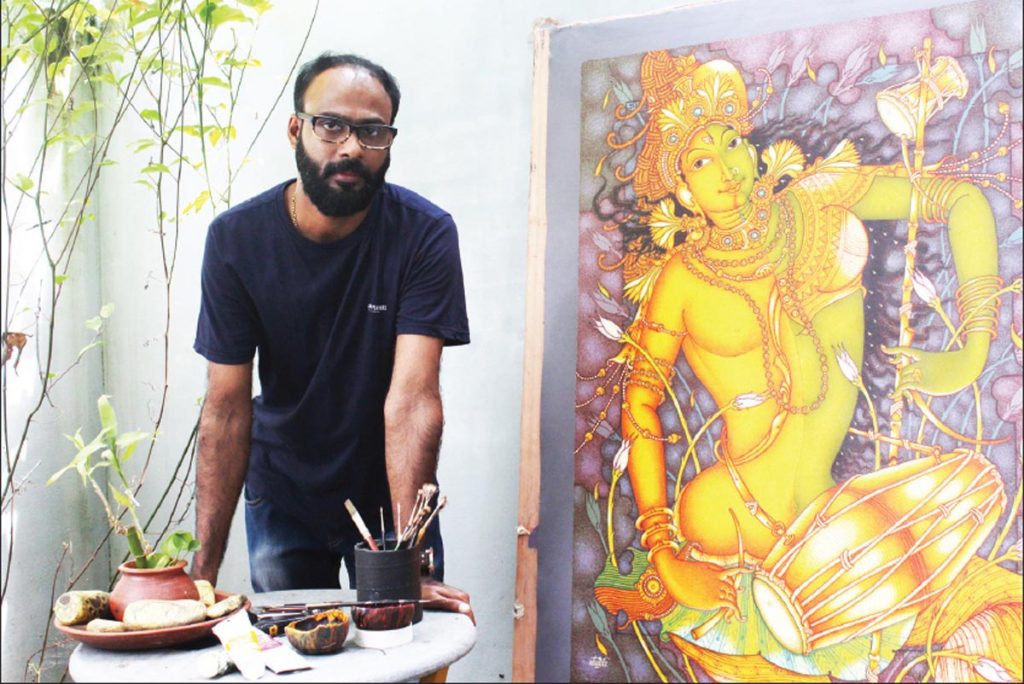

Which role is more challenging, a restoration practitioner or a contemporary artist?
Without doubt, the role of a restoration practitioner is more challenging. The temple murals are not commercial products that can be sold and bought in the market. They are based on holy scriptures. Therefore, one needs to observe all the scriptural guidelines very carefully, whereas a professional artist’s objective is to discover his or her own path and style. I find it is still less about the mind, and more about the soul than what I experience in my other art.
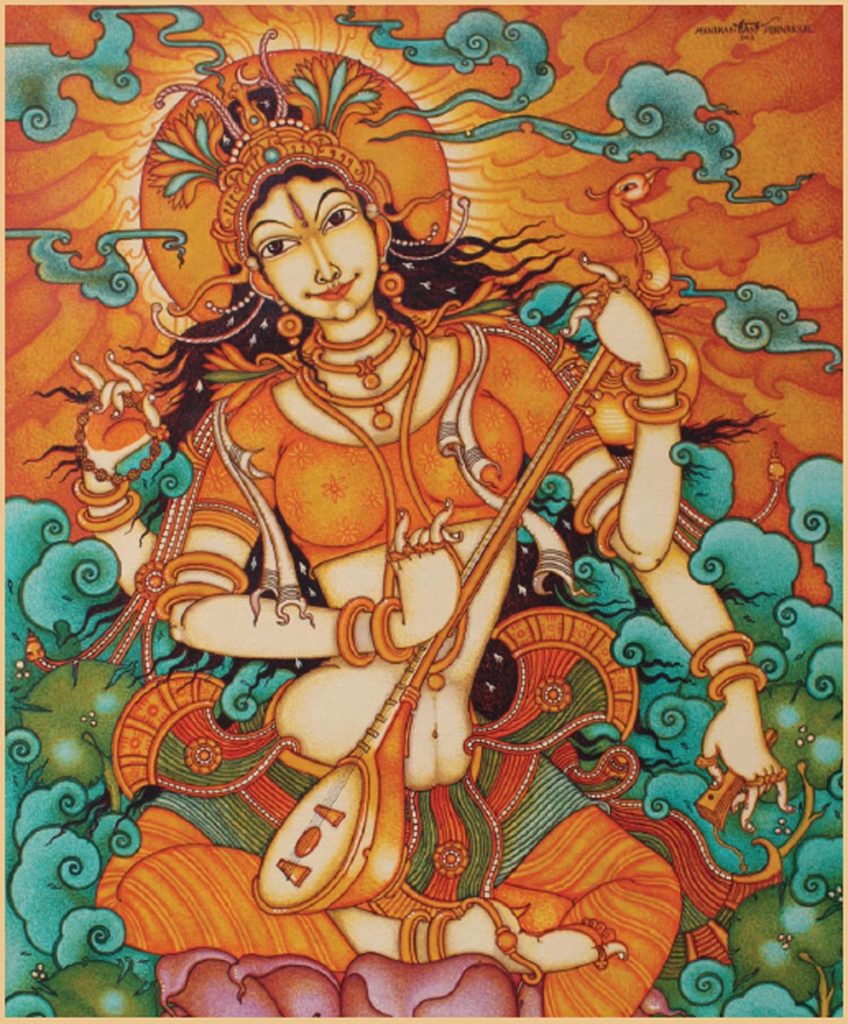



In painting temples, the artist also needs to keep in mind that the restoration is irreversible and the end result should be able to survive harsh conditions. Painting these flaking and fading historical treasures is a task of great responsibility.
As an artist, you have received your knowledge in the traditional gurukula style. Please comment on how guru-shishya parampara adds value in the learning process.
The biggest asset of our ancient gurukula system is that the students live near their teacher in a common residence or a monastery. This coaching method is most appropriate for mural training, because there is a great need for a close interaction between the guru and shishya (student). We are talking about a practice-oriented training which requires in-depth knowledge. Constant guidance from the teacher is a must.
In a gurukula, students lead a disciplined life, adhering to a strict schedule. Experiences like mundane chores and eating simple temple meals may seem insignificant to a lay man, but they play a great role in character development. A shishya trained in the gurukula style graduates as a responsible and mature individual, confident and skilled enough to face the challenges of life.


Your relief murals are immensely experimental. Has the practice of these three-dimensional murals changed your approach towards other media like canvas and paper?
My murals in cement (see lower left photo) are actually an adaptation of the leather puppets made for Tholpavakoothu, the shadow puppetry that is practiced in my hometown, Palakkad, Kerala. It’s a ritual art form dedicated to Bhadrakali and is performed in Devi temples. The feedback I have received from fellow artists and clients is that my two-dimensional art has gone through a transition since I started creating the relief murals. There’s more depth in my paintings. Such changes in style are inevitable. Each time one tries a new medium, it’s bound to have a ripple effect on one’s other creative work.
Unlike in ancient times, where mural artisans enjoyed rich patronage of the royals, a full-time artist in contemporary times faces many hardships, in terms of commissions, time, money, etc. Did that discourage you from taking up this practice as a means of living?
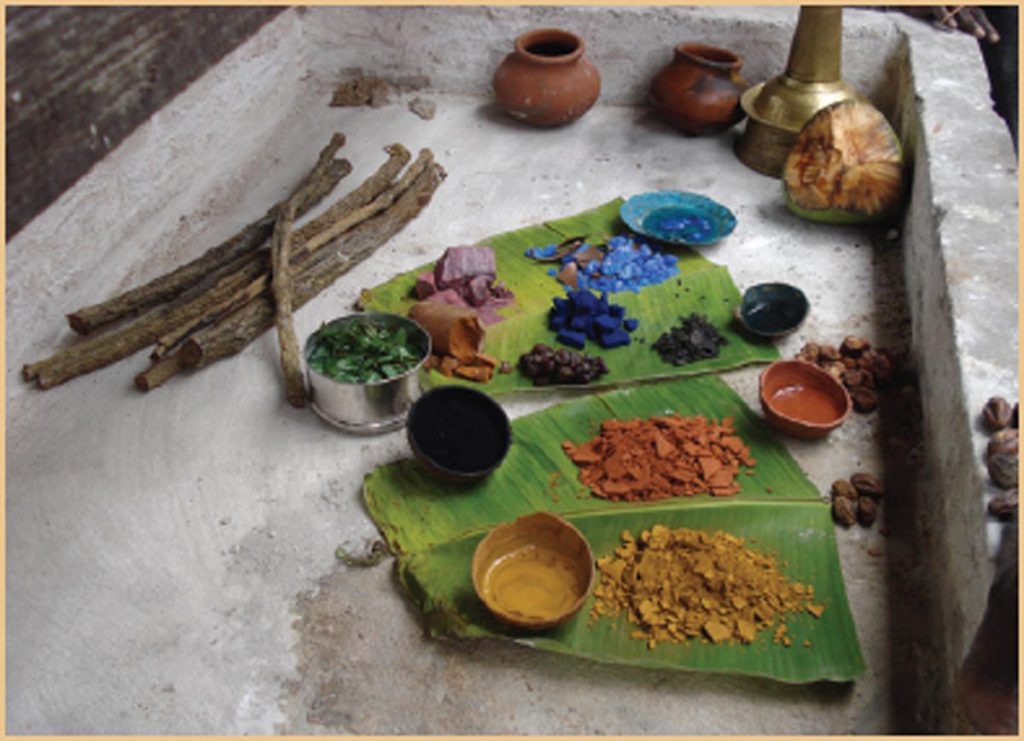

Trials and challenges exist in every field, but that has never deterred me from taking up this profession. My dream and my goal were always clear. I was fortunate to have started my career with the right resources and exposure to art.
The art market is extremely competitive and demands a lot of passion and commitment. Artists need to constantly discover and explore their creative limits in order to grow farther and keep up with the changing times. Dwelling over hardships will only stagnate and kill one’s creativity.


What are your views on the prospects of mural art in Kerala in general? Will it survive another century?
Traditional mural art is here to stay. In fact, it has just stepped out of the temples, and its global journey has just begun. However, to make a mark in the art circuit an artist needs to develop his own unique style for the sake of originality. One needs to have an individual expression and emotion.
As for the murals in the temples, many positive efforts are being made to preserve and revive this rich heritage. The Institute of Mural Painting, established by Guruvayur Devaswom in 1989, kick-started the process of preservation. Subsequently, several more government-initiated institutes, like Vasthuvidya Gurukulam in Aranmula and Sree Sankaracharya University of Sanskrit in Kalady, have offered certified courses in Kerala mural painting. Many enthusiastic students enroll every year in these institutes, which shows the growing popularity of this art form. Kerala murals are now counted amongst the most iconic artworks in the country.
INTERVIEW
Sasi Edavarad


Since the beginning of his career, Sasi Edavarad has made it a mission to work towards conserving and promoting this sacred art. He’s the founder of the Chitrasopanam school of mural painting, an institute distinguished by teaching techniques that closely follow the authentic principles defined in the Vedic Shastras (scriptures). The primary mission of the school is to pass our heritage to the next generation .
As an artist, you transform verbal descriptions of the cosmic world into visual expressions. In a way, these paintings serve as a pathway to enlightenment. How has this practice helped you evolve spiritually?
I consider myself a disciple of Kerala mural painting. It is a teacher on my path to Self-realization. This art form works as a liberating activity for my mind and intellect.
A verse from Chitrasutram (an ancient text on painting) explains my sentiment eloquently: “ Chitrakala (the art of painting) is the foremost of all art forms; thus, a person who does worship through Chitrakala attains the four goals of life, leading them to moksha (freedom from rebirth).” Kerala mural art is appropriately termed as Sopana Chitrakala —the art that leads one wholly to the Lord.


How significant is faith and devotion for a classically trained muralist? Do you have to be a devout Hindu to master this sacred art?
Any person who believes in our Vedic Shastras can be part of this art form irrespective of other affiliations. But as you rightly put it, this is a sacred art form whose genesis is the ancient texts, so a proper understanding and faith in these scriptures is essential.
I have taught many aspiring artists from other beliefs who have shown great conviction to this sacred art. As long as one honors the discipline and accepts the principles laid down in the Grantha Shastras , the artist would experience aswadhan (utmost joy) in painting the temples.




The classical texts like the Shilparatna and Vishnu Dharmottara Purana contain the working guidelines for Kerala muralists. Do you feel diligent adherence to these rules is too restraining and leaves little room for freedom of creative expression?
These guiding principles are not rules, as they aren’t restrictive in character. Rather, they are strategies or philosophies that form a bedrock for creativity. The ancient texts which we artists use as reference are a result of knowledge distilled over thousands of years. Leave alone the thought of mastering them, just comprehending the scripts accurately would take more than a lifetime.
As the artist begins to understand these guidelines, he starts building upon them with limitless creativity. These classical texts are the backbone of Kerala mural painting.
As the founder of the Chitrasopanam school of mural painting, how do you see your role in terms of preserving and promoting the traditional Kerala art? What is unique about Chitrasopanam?
I started this school with the sole purpose of creating awareness and appreciation for our traditional art form. Chitrasopanam’s syllabus starts from the bare basics. Our main purpose is to cater to the students who don’t have prior knowledge of art. Praveshika (initiation), Naipunya (specialization), Acharya-I and Acharya-II are the four levels of our two-year course. The techniques we follow are strictly traditional for all the stages. These include color preparation from natural sources, drawing and painting methods, and restoration processes.
Our school also organizes painting workshops and seminars on a regular basis to engage the general public with ancient art and culture. I’d like to believe that my humble undertakings have helped in the revival of this traditional art, even if in a small way.


Is there any prior knowledge an average viewer or buyer should have, in order to appreciate or connect with this art form?
When a viewer appreciates an artwork, a connection is formed inevitably, irrespective of the reason. A shloka from Vishnudharmottra Puranam explains this concept eloquently: “The fine lines are appreciated by the acharyas (teachers), the shading by the pandits, women admire the ornamentation, and ordinary men the vibrancy of the colors.” People from different spheres experience or value a painting each in their own way. One need not be an art connoisseur or an expert to admire aesthetics. If there’s an attraction, a link is formed instantly.
Which subject depicted in Kerala mural style is most popular among art enthusiasts and buyers?
There are many themes which are favorites among buyers, such as Ananthasaynam (reclining Vishnu), Ganapati (Lord Ganesha) and Venugopal (Krishna with flute). In my experience, however, the most sought-after subject has been Siva’s Pradosha Nritham—His dance performed at dusk. Siva in dancing form is depicted with sixteen arms. With his left leg, he tramples upon a Muyalaka —a demon—an act representing victory over ignorance. Siva’s right leg is lifted, signifying liberation from darkness, or the raising of oneself to enlightenment.
INTERVIEW
Kalamandalam Bindhulekha


Kalamandalam Bindhulekha is both a classical dancer and an accomplished muralist. Part of what makes her artwork so fascinating is how she blends both these art forms in a surrealist style. The first female artist to paint on the walls of temples, she is best known for her unique compositions .
Were you artistically inclined since childhood? Could you please say a few words about how you started your artistic journey?
I feel, if you’re an artist, you have a natural-born talent. I was a very creative child, so aiming for an academic discipline in fine arts was a given. After I finished my graduation in classical dance (Mohiniyattam and Bharatanatyam), I wanted to try my hand in painting. Seeing my brother-in-law’s inspirational artworks, I discovered that art is my true calling. Recognizing my passion and commitment for this traditional art, he took me under his tutelage as his shishya and thus started my six years’ gurukulam-style training.


I was lucky to receive on-the-job training by assisting him for many of his prestigious projects, which served as great exposure for an amateur artist like me. Eventually, after my debut work in the Bhadrakali temple, I gained enough confidence to take up mural painting as my full-time career.
How has the practice of this sacred art helped you evolve spiritually?
We all have our own interpretation of spirituality. For me, my guru’s grace is the most sacred blessing I have received. I can’t stress enough how fortunate I feel to have received his guidance. My guru, P. K. Sadanandan, is a renowned artist and the only traditional muralist featured by the Kochi-Muziris Biennale (the largest art festival in Asia). He was the disciple of the legendry muralist Mammiyoor Krishnankutty Nair.
He believes an artist should have the potential to carve out their own space for cultivating personal expression. Following this principle, I have learned to portray my own vision and interpretations. So in a nutshell, for me, spirituality begins and ends with my reverence for my guru.


As we understand, you are the first woman to paint on the walls of a temple. When you started your career as a temple muralist, did you face any resistance? Did people respond positively?
There was no opposition from any group. In fact, I was cheered on and received a lot of support from my friends, family and the temple authorities. When I’m painting, I’m quite oblivious to my surroundings, I become totally immersed in my work, so even if there was negativity from a temple visitor or someone else, it never would have really come to my notice.
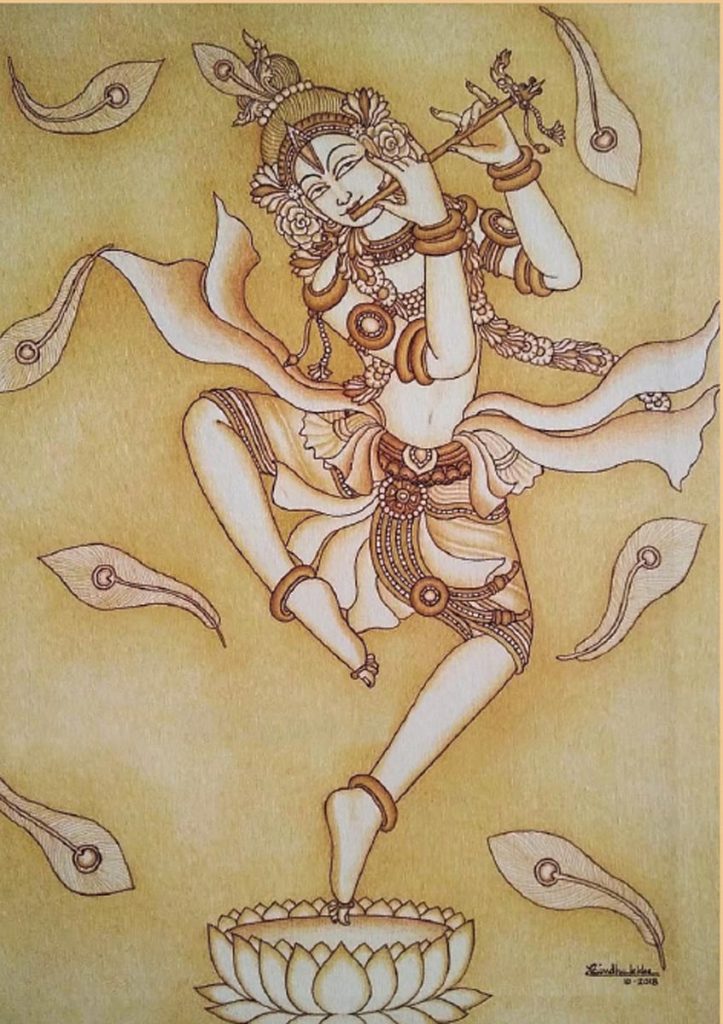

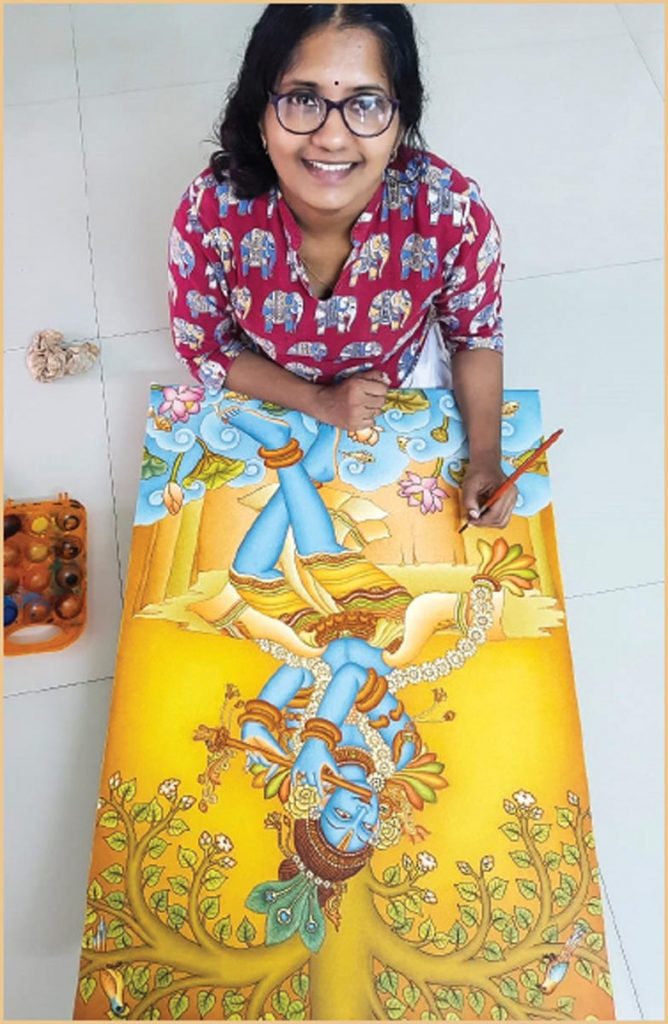

Your first commission was a 50-square-foot mural made in the Vadakurumba Bhadrakali temple in Thrissur. Could you expand a little on the concept of this theme and your experience?
I wouldn’t call it a commission since there was no money involved. It was sort of a spiritual practice, an act of piety for me. The theme was of the three gunas, or qualities: rajas, tamas and sattva. They are illustrated in the three forms of Devi. Sattva is depicted in Saraswati, as the enlightened, knowledgeable one, painted in shades of white. Tamas is represented by Bhadrakali, the fierce form of Shakti, and is painted in the shades of dark blue. Mahalakshmi, the Goddess of abundance and success, depicts rajas and is painted in shades of red.
I gained a lot of practical knowledge and understanding with my debut project. Painting on a wall as compared to a canvas is altogether a different experience. It took two years for me to finish this wall art. There was no time constraint, so I took my time and enjoyed the learning process with no outer pressures of any kind.
You’re a formally trained classical dancer, the influence of which is clearly visible in the figures of your paintings. Could you talk a bit about the interweaving of these art forms?
Most of our ancient Hindu texts state that both chitra (painting) and natya (dance) are fundamentally connected. One of the verses from Chitrasutram explains this inter-linked relationship very well: “What cannot be demonstrated in a dance form can be expressed in a painting and vice versa.”
The Natyashastra , the earliest literature on dance, has heavy influence on the iconography of our ancient paintings. The classical text is said to have laid a deciding foundation for many fine art writings that followed. Being a dancer, I can comprehend the connection very readily. Depicting the gestures and postures onto the canvas comes very naturally to me.
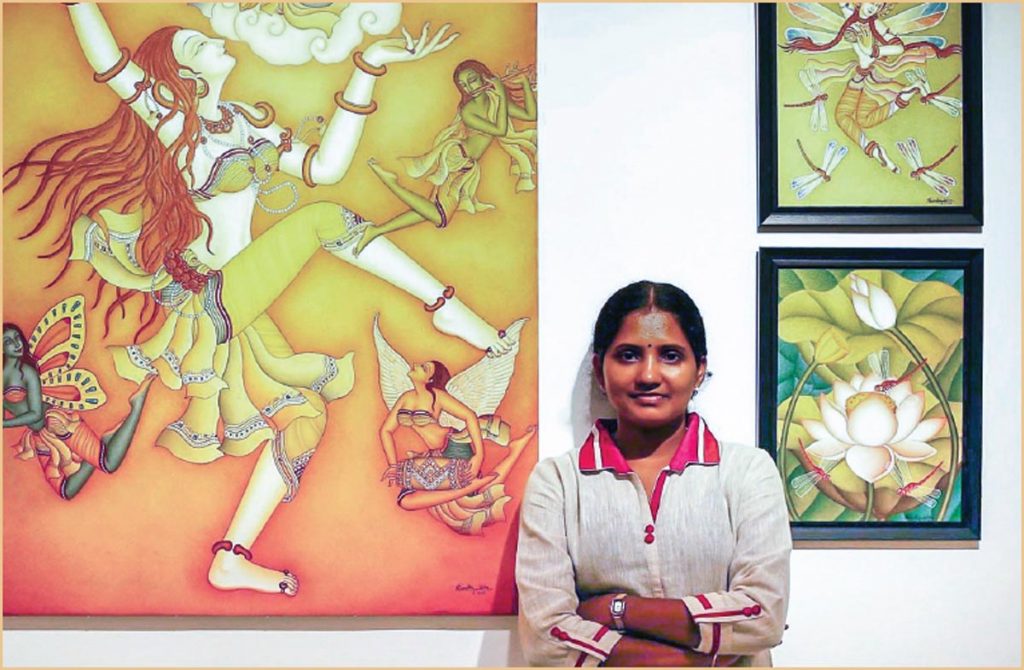

We find that Kerala mural paintings are also printed on various products like vases, coasters, magnets, accessories, clothes and so on. Do you think that reduces the essence of the art form or does that leverage the popularity of this traditional skill?
Personally, I feel the art form loses its exclusivity if sold in this manner. Popularity gained through such means is temporary, a passing trend. This classical art has survived for centuries because of its ingenuity; it doesn’t need endorsement to gain recognition or win appreciation.
INTERVIEW
Saju Thuruthi


Saju Thuruthi is the head of the Fine Arts Department of Sree Sankaracharya Sanskrit University. He has earned praise for his selfless contribution to the Kerala art scene as the founder of the unique residential art gallery “Art and Mind.” Additionally, as a professionally trained art conservationist, he has restored murals in over fourteen historical temples across Kerala. His artworks can be found in many institutes and prominent private collections throughout India and abroad .
At what age did you first encounter the sacred art of Kerala mural painting? Did you start out of sheer devotion or was it an artistic calling?
I would say it was both my passion for creativity and my religious beliefs that lead me to this holy art. I grew up in a religious family; many of my childhood memories revolve around our regular visits to the Guruvayoor temple. I still remember how those exquisite murals fascinated the artist in me. I feel each artist is born from a certain inspirational experience, and those temple visits worked as that stimulus for me. So, yes, devotion and spirituality did play a major role in making me a muralist.




As for art being my true calling, I was creatively inclined since childhood and had a special affinity for traditional art. Still today, I draw inspiration from the murals of Guruvayoor temple, which illustrate stories straight out of our holy scriptures. I feel that I recognized my creative potential at a very early age and art has indeed been my inner calling.
The Shilparatna suggests that, while holding to the techniques learned from one’s teacher, the artist needs to use his own mind to visualize the Deities from the slokas. Do you agree with this point of view? Kindly elaborate.
Yes, it’s imperative to exercise one’s own imagination and intuition for creating art of any kind. Translating the verbal expressions of the verses into visual language while still following the defined principles might seem like there’s a common template set for all the artists, but the options for creativity are endless. The rupa (form) has been defined in the scriptures, but the artist needs to use his own mind to visualize subjective elements like the rasa and bhaava (emotions and sentiments), embellishments and other details. Similarly Panchavarna, the traditional five-color palette (red, yellow, green, white and black) is predetermined, but the formation of different tones is purely dependent on one’s creativity.




As an art conservationist, you’ve had the good fortune of restoring wall art in various historical temples. Looking back, do you think this practice has gradually changed your relationship with the Divine?
It’s not as profound as you say it, but it’s surely been a consequential journey for me. It’s a spiritual practice after all; there’s definitely a special link formed between the artist and the murals.
I have always been a very religious person, so I wouldn’t say that my faith has gone through a transition, but rather that my profession has strengthened my beliefs. These historical paintings are chronicles of the holy literature that encapsulates my religious understanding. Painting them has only magnified my consciousness.
Your initiative “Art and Mind” is probably Kerala’s first residential art gallery for murals. Can you share a little about your new venture?
“Art and Mind” has been my dream since the beginning of my career, an open space for emerging artists to showcase their work. We organize art camps, exhibitions, creative workshops, discussions and other such activities that serve to cultivate creativity. It’s built as a support structure for upcoming artists, a space to get them to concentrate, to do research, to produce, to connect and to collaborate.
To build a dialogue between artists and aesthetes, we regularly host art shows and invite audiences to watch and interact with artists during residencies and retreats. Many art enthusiasts have a keen interest in witnessing the making of Kerala mural art, which further spreads awareness of this art form. My ambition is to expand this platform even wider, as an energy center for art discourse.
Is there any other art form that fascinates you?
For me, all art forms hold a unique aesthetic value in their own right. However, if I were to pick a favorite, then I would say the ritualistic art form of Kerala, Kalamezhuthu, a traditional art that has intrigued me since childhood. It’s practiced in temples, where large pictorial representations of Deities like Kali and Lord Ayyappa are made on the floor by sprinkling natural colored powder. Kerala mural painting is said to have been inspired from this ancient Dravidian art.
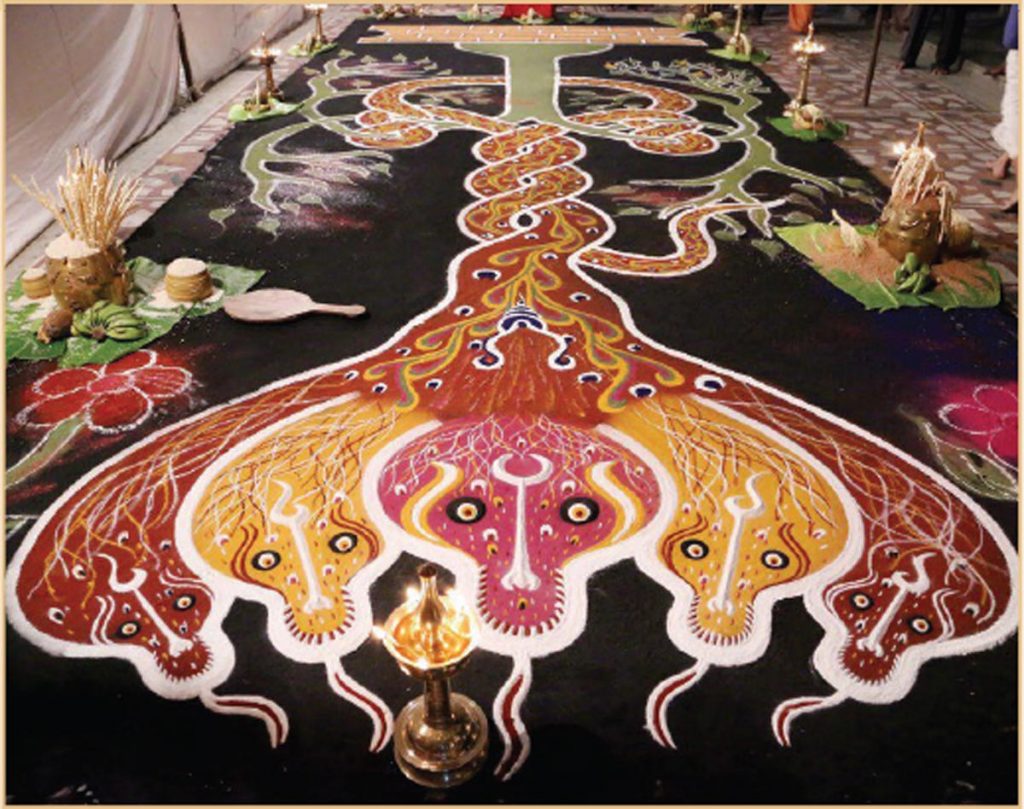

Is there any specific teaching process you follow to help your students cultivate a better understanding?
I’ve gained this knowledge through guru-shishya parampara, so I like to follow the threefold gurukul teaching technique: shravan —listening and receiving the knowledge, manan —analyzing and thinking by the student, and niddhyaasana —complete comprehension and applying that knowledge practically. The first step involves learning and absorbing the information. The student is then expected to assimilate the knowledge using his own mind and imagination. Finally, the last step is hands-on practice with complete focus.
Restoring Temple Murals
TODAY, DESPITE CONTINUOUS EFFORTS being made by temple authorities and the Kerala State Archaeology Department in restoring historical murals to their former glory, many still remain desperately in need of a face lift. Sadly, some have become dilapidated beyond hope of preservation. So, those murals are being redrawn. In such instances, we can spot a few contemporary inclusions by modern artists. Sasi Edavarad shares a fine example: “The cloud motif often seen in present-day murals is borrowed from Thangka painting (Tibetan Buddhist artwork). Such elements are region specific. Clouds are an inherent feature of the Tibetan Plateau; whereas authentic Kerala Murals carry imprints of bountiful trees, animals, etc., indicative of the biodiversity of Kerala.”
Traditional belief is that the organic materials used for the murals help in forming a special link with the cosmic energies. Therefore, for restoration, artisans strictly follow the indigenous method of using only nature-sourced articles. Depending on the size and condition of the paintings, temple authorities identify a group of skilled and experienced artists who, while boarding within the temple, lead an austere lifestyle, as is required for working at a holy site. An elaborate renovation project can easily last three years, involving a team of two to ten artists. Respecting the temple protocols, the renovation activities are performed mostly between the morning and evening pujas.
The deterioration of these old treasures is typically due to exposure to extreme climatic conditions and human contact. Since they are painted on the exterior walls of the Srikovil, or sanctum sanctorum, the circumambulation path around it leads to unavoidable physical contact by devotees.
However, there is uplifting news for art enthusiasts. Some experts claim these renovated mural paintings can easily last 100 years. Rest assured, the contributions made by these artists will be witnessed by generations to come.
Kerala muralist Suresh Muthukulam…
Bringing the craft to countless travelers from around the globe
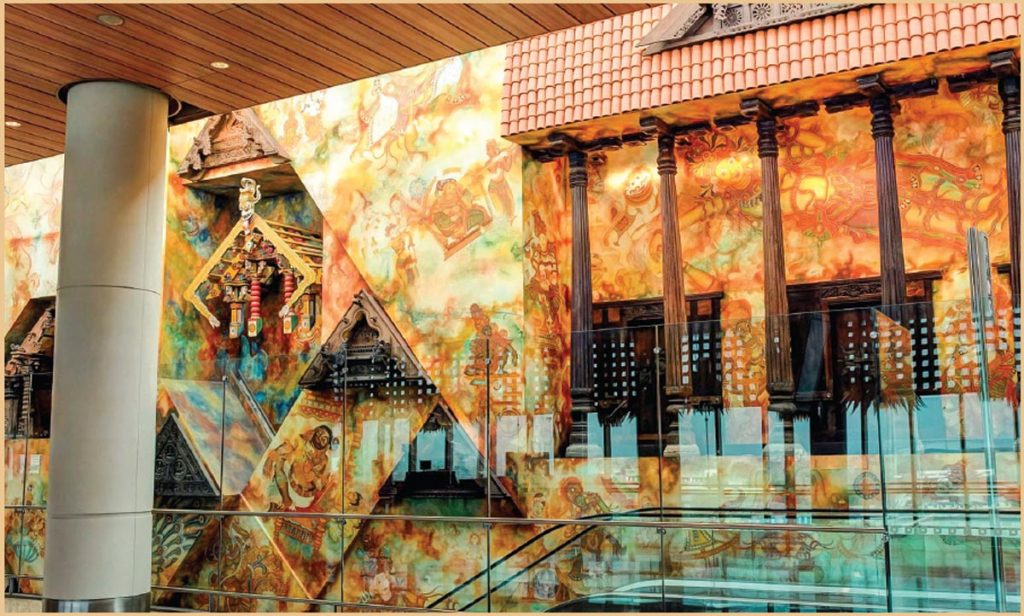

I internationally recognized muralist Suresh Muthukulam has been long known in the art world for his creative escapades. In recent times he has made a mark in the industry with his monumental 4,000-square-foot mural at the T2 Terminal of Mumbai Chhatrapati Shivaji Maharaj International Airport. The wall art, made in Kerala mural style, is part of the Jaya He GVK New Museum, an ambitious art venture initiated by GVK Power & Infrastructure Limited. This six-year project involved more than 100 artists and 1,000 craftspersons, including architects, designers, engineers, technicians and laborers. The museum showcases diverse traditional, folk and contemporary art forms of India, spreading across a two-mile span within the T2 terminal.


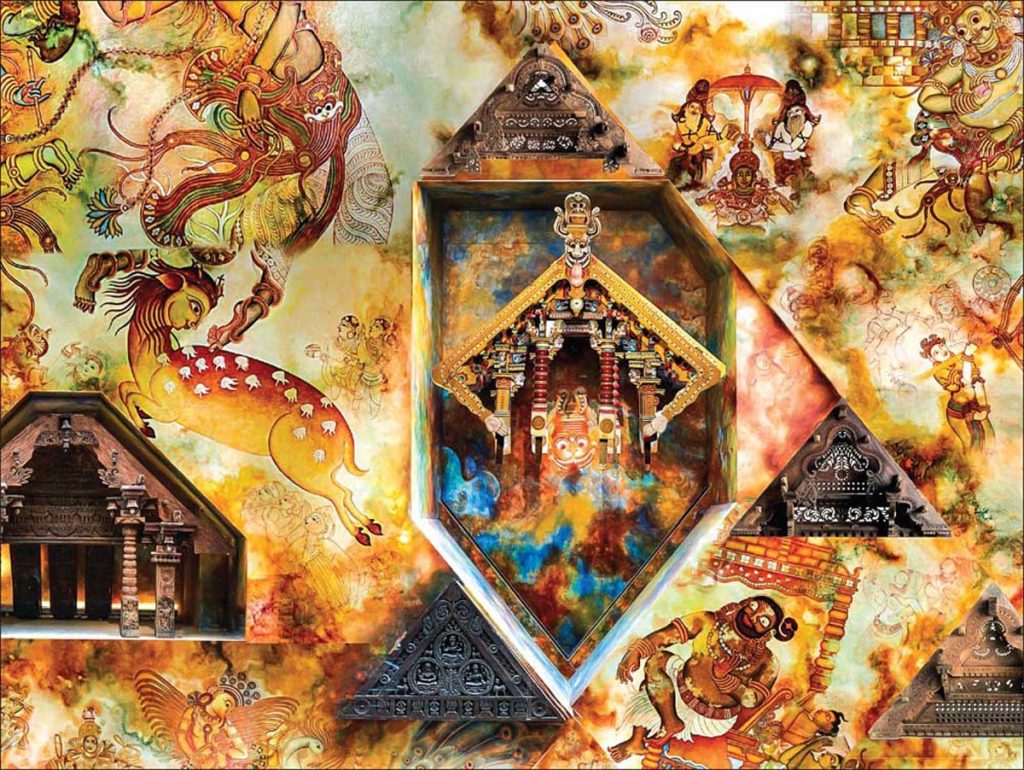

The theme of Suresh Muthukulam’s iconic mural is Ashta Dikpala—guardians of the eight directions, a subject that was well chosen for the concept of traveling and touring. This group of Deities, Kubera (north), Yama (south), Indra (east), Varuna (west), Isana (northeast), Agni (southeast), Vayu (northwest) and Nirrti (southwest) are traditionally illustrated on the walls and ceilings of Hindu temples. Painted in the Panchavarna color scheme, the mural has attracted widespread interest and won admirers from across the globe. He has skillfully given the artwork a modern look, while still maintaining the ancient Kerala mural style as the base. This vibrant piece, along with other artwork and artifacts of the museum, can easily be counted as one of the most recent and best art tourist attractions in the country.


About the Author
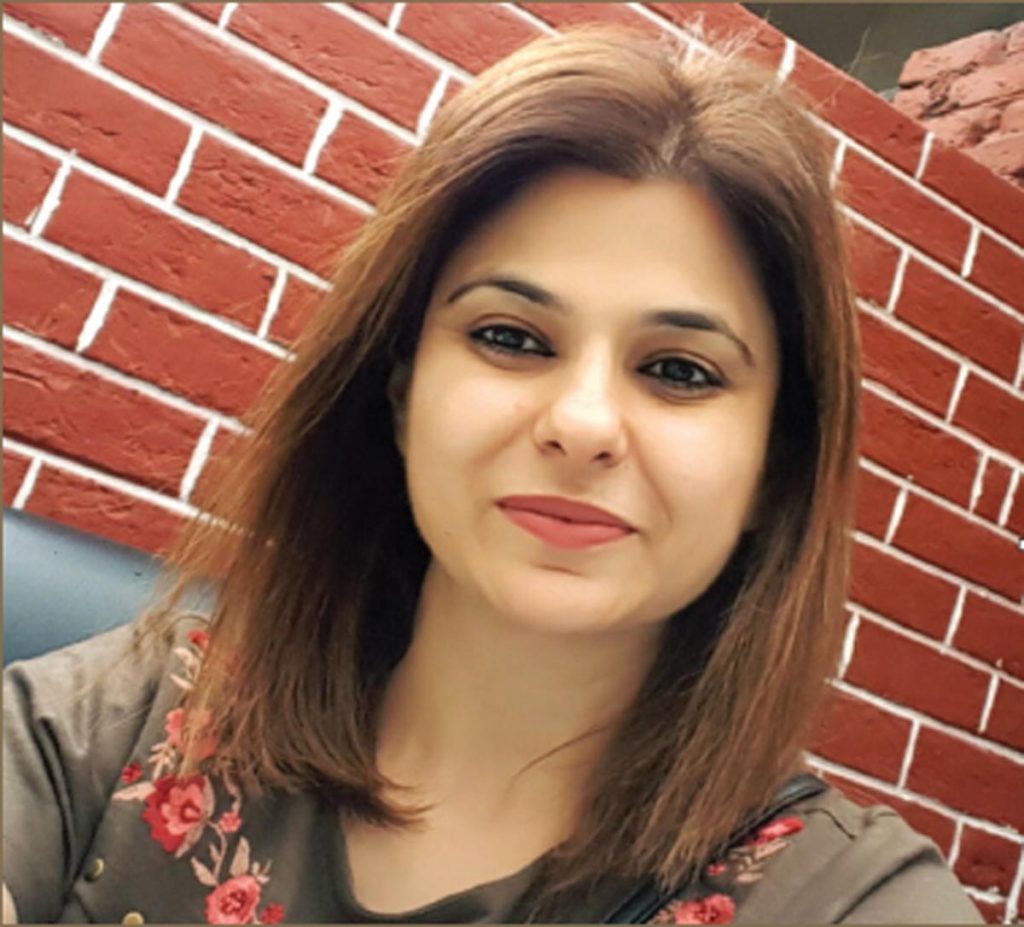

A post graduate in fine arts, armed with more than eighteen years of experience in the creative industry, Baani works independently in various capacities as an Art Director, Curator, Writer, Designer, Illustrator and as a Fine Artist. Her forte in writing is art related subjects, be it about contemporary art scenario or historical subjects.


